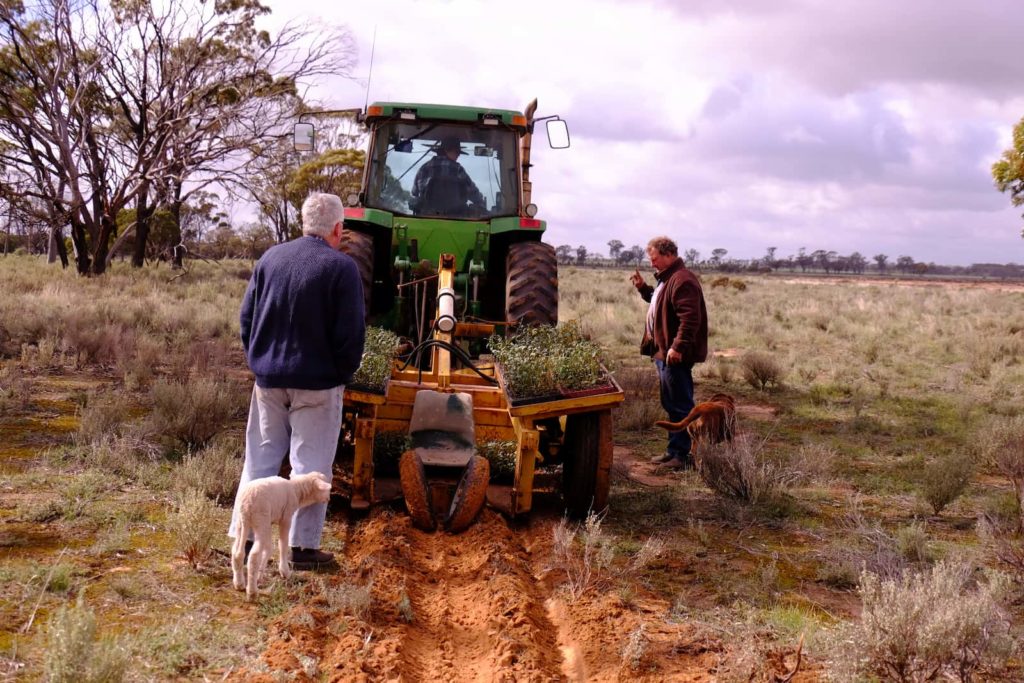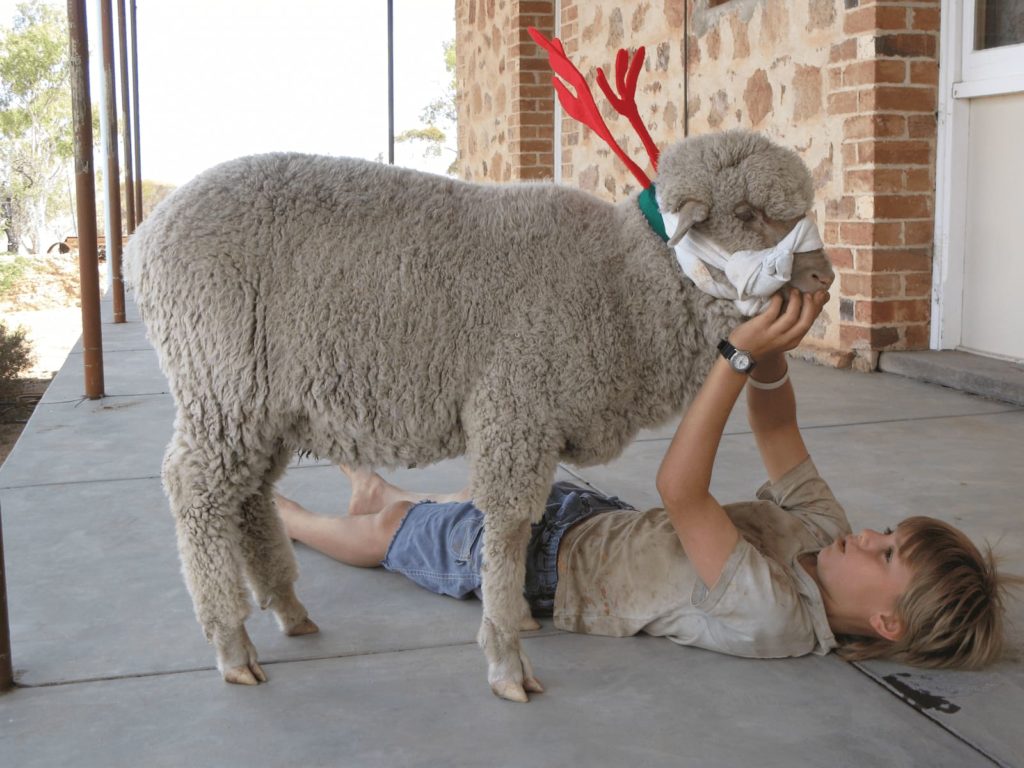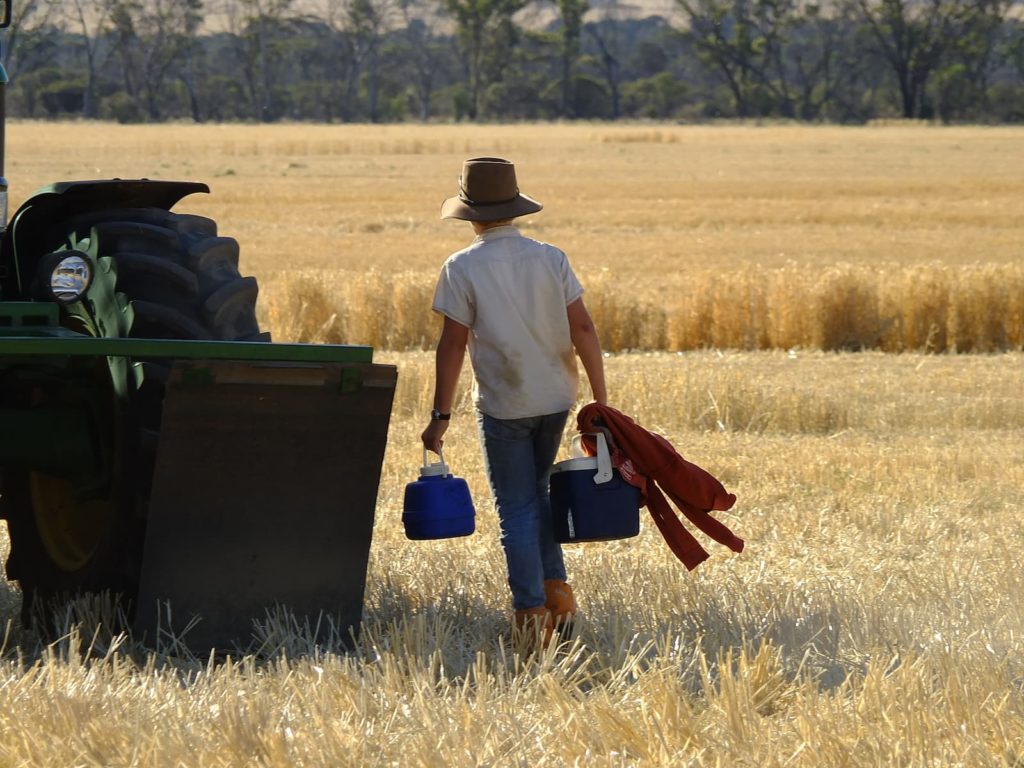A young farmer’s fresh outlook on the land
February 2025
MONTY HOUSE is one of the youthful voices driving a resurgence in farm-based landcare. At 24, he’s already on the WA Landcare Network management committee and is the newly elected Chair of the Gillamii Centre, supporting landcare across much of the Cranbrook and Broomehill-Tambellup Shires.
Monty shares his story and perspectives on the work he’s doing on his farm, what is happening more broadly in the landcare space and what needs to happen. The issues he addresses include the fate of paddock trees due to the expansion of cropping. His thoughts on this issue are sobering. Many people feel distressed seeing the piles of bulldozed trees, so it’s good to have this issue discussed openly.
My parents, Marty and Sheena House, sold their Kojonup farm when I was six and bought a property in the shires of Bruce Rock and Narembeen. About five years ago we moved to a farm in Tenterden, adjacent to the Stirling Range (Koi Kyeunu-ruff).
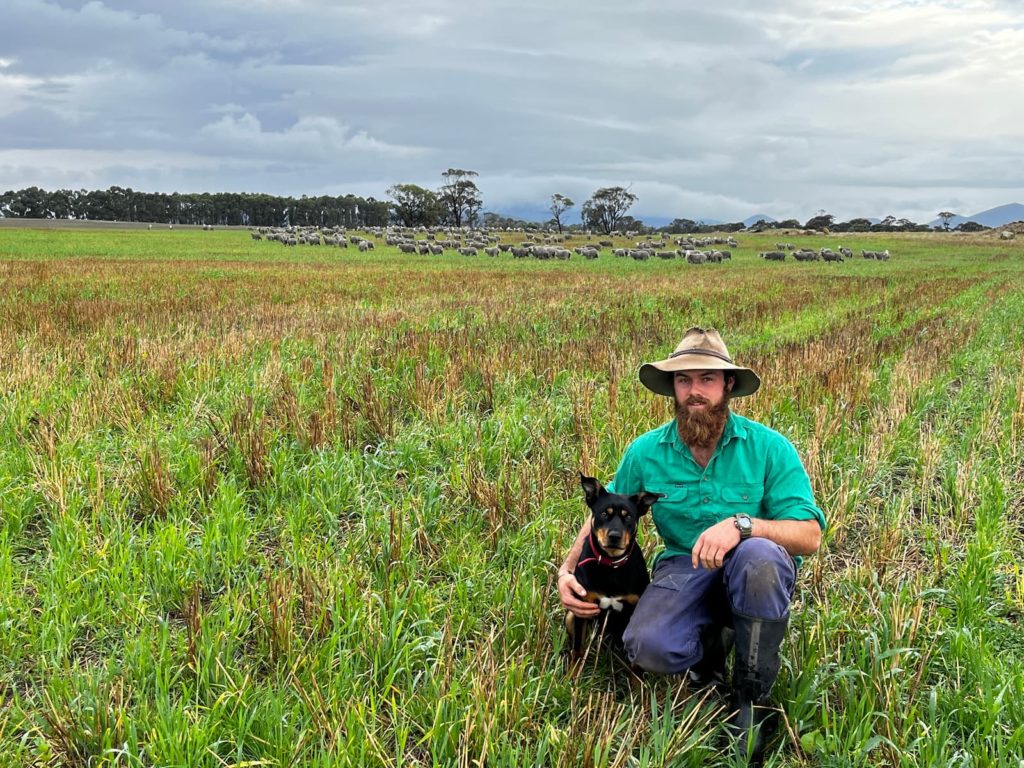
All three farms have been called Ripplemead (rippling meadows) as the name has travelled with my family since my great grandmother Lily moved to Australia from her family farm Ripplemead in South Africa. She came to Australia as a travelling companion, met my great grandfather Maurice and they married. In 1928 they bought a farm in the Kojonup district, which they called Ripplemead.
Our family photos show I had an exciting time growing up. At Bruce Rock we were very close to the natural world. I spent a lot of time following echidnas and learning from the natural world around me. I canoed and swam in farm dams, took part in tree-planting expeditions, played in mud and made mud houses. I boarded at Christchurch for Year 7 but the controlled environment didn’t work for me, so I was homeschooled.
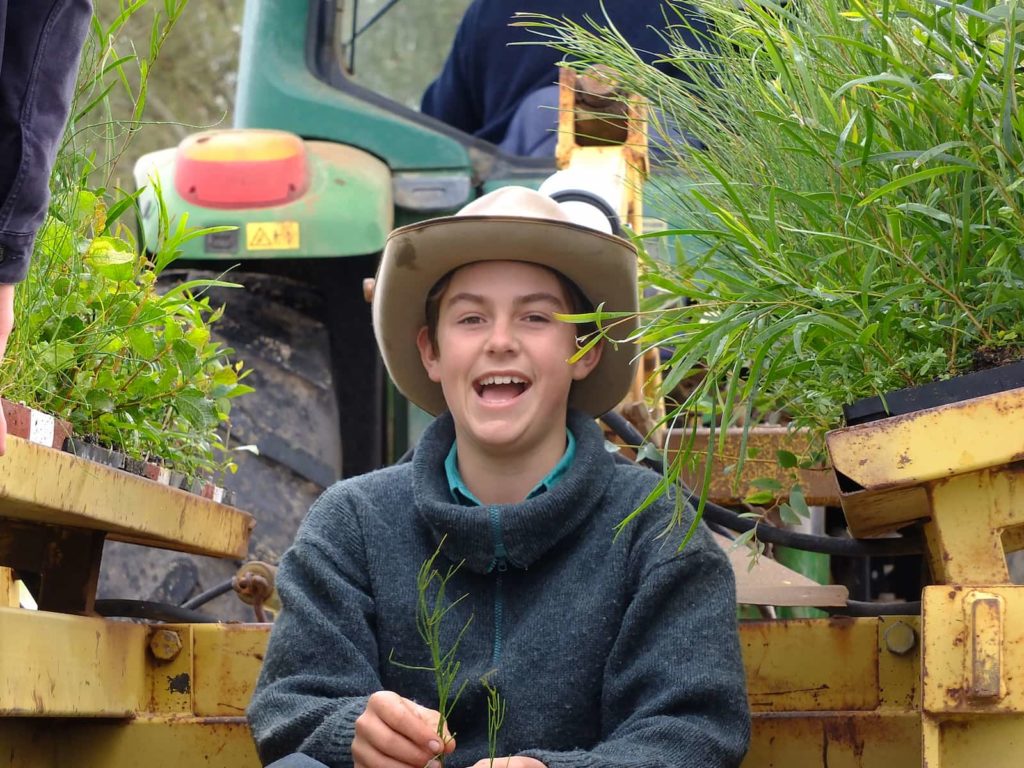
Homeschooling gave me the ability to be very self-directed in my learning. I conducted science experiments and farm projects, fossicked for rocks, and learned archery and how to shoot. This happened alongside driving machines and caring for sheep, usually with a dog and a pet sheep in tow. Even though the normal maths and English still needed to be done, I’d get them out of the way very quickly, allowing more time for my “outside the box” education.
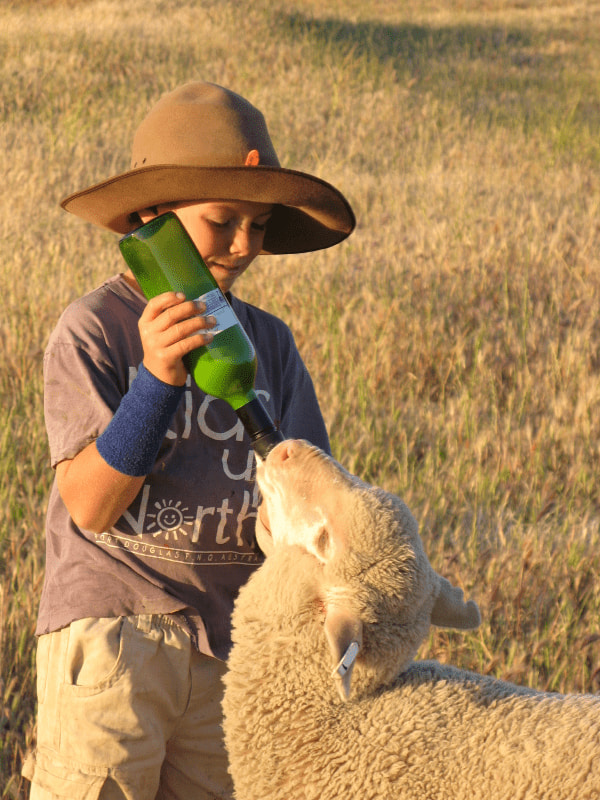
When I was 14, Dad gave me my own part of the spraying program and a boom spray unit – we were spraying calcium across the canola crop. I had 1000 hectares that year and 800 the next, which I just loved. Another favourite project involved a Toyota HJ47 rebuild. I transformed that old ute from an unlicensed wreck to become my first licensed vehicle.
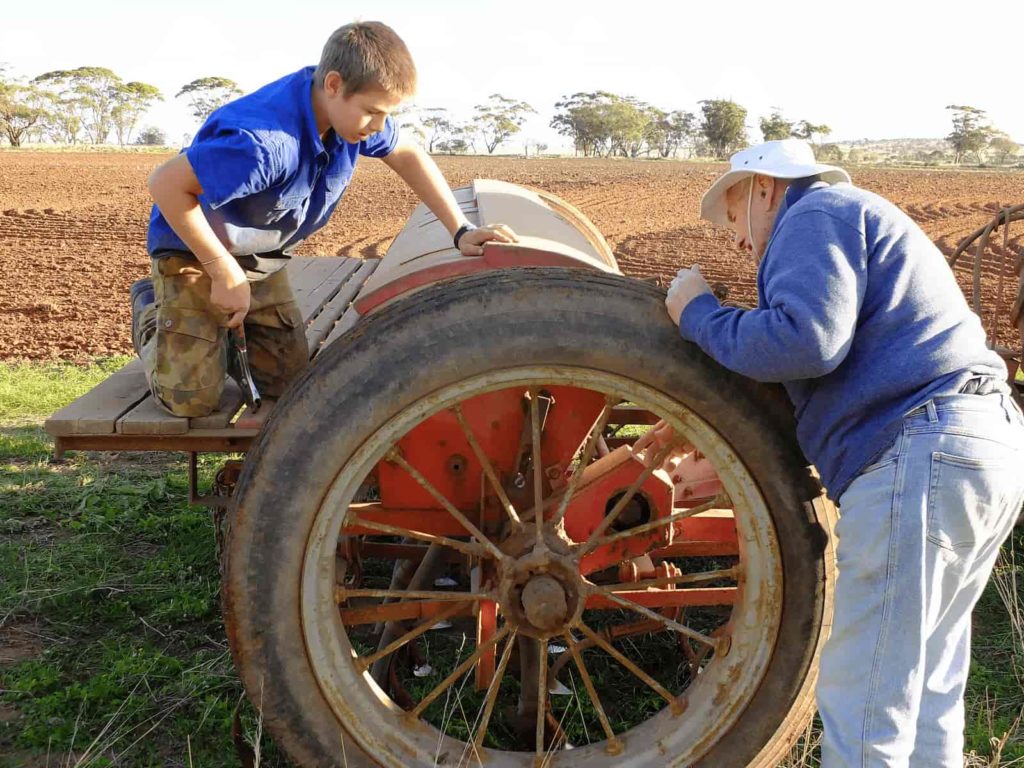
My parents let me get out there and explore the farm and explore the world. I’ve grown up with the farm being my world and that’s just never really changed. I love farming.
I suppose I have loved all three farms for their individuality. Home is where I am now on the farm at Tenterden, simply because it’s the place we’ve got and it’s the land that I’m working with and working to restore.
Moving here was a family decision to chase reliability of rainfall more than anything. Bruce Rock was a tough place to farm with its high seasonal variability. We could do extremely well in a good year, but a couple of bad years in between would knock the stuffing out of us. Moving to Tenterden was about trying to find a more even income stream and coming back to a smaller, more intimately managed farm.
Even down here the seasons have been quite variable but there’s more scope for profitability within that variability. You get enough rainfall here to get by, even in a tough year, like we’ve had in the last couple of years. So I think it’s a good decision for our future.
I have a powerful vision for the farm. I’m working towards building a model of financial sustainability and environmental regeneration. This involves trying to find a good balance between doing the right thing by the land and maintaining our economic viability as a business.
We’ve been changing to more environmentally friendly inputs that will build our soil health. In time, this should help our soil to act as a buffer for climatic extremes. We’re certainly trying to minimise chemical use as much as we can. Although we still need a reasonable amount, we’re very judicious in the way we use it and take up other options when we can.
We’re really working to integrate livestock – our sheep – into the farming system in ways that are beneficial. To help build soil health we use rotational grazing systems to encourage the growth of healthy deep-rooted pasture with more above-ground biomass. This method of sheep management also helps to restore our natural carbon cycle.
As much as it’s been a very tough time for the sheep industry, there’s still a future in them. We’ll stick with a core of merinos as Dad has always loved wool and we see wool as the environmentally friendly fibre of the future.
After coming from Bruce Rock, I see the bush on our Tenterden farm as being very sick. At Bruce Rock we had a lot of very pristine bush that was still very, very healthy. Whereas here at Tenterden there are a lot of weeds through our patches of farm bush, and a lot of it got hurt badly in the 2003 Tenterden fire. It damaged our big old white gums and red gums – now many have died and we don’t have a lot of those old trees left on our place.
I have different experiences of nature in Tenterden. We’ve still got eagles and other raptors, many parrots and tiny birds which are a pleasure to watch. So the bird life might be a bit more varied down here. We’ve certainly got stacks of racehorse goannas. They’re everywhere around the sheds and around the farm. You’ll walk out of the shed and there’ll be a racehorse sitting there, and you’ll say “G’day” and tip your hat to him and move on your way. But we don’t have the diversity of animal life that I remember at Bruce Rock. They’re much sparser. I’ve seen one echidna in the whole five years we’ve been down here, and that wasn’t even on our place, whereas you’d see one every month or two at Bruce Rock, which was special.
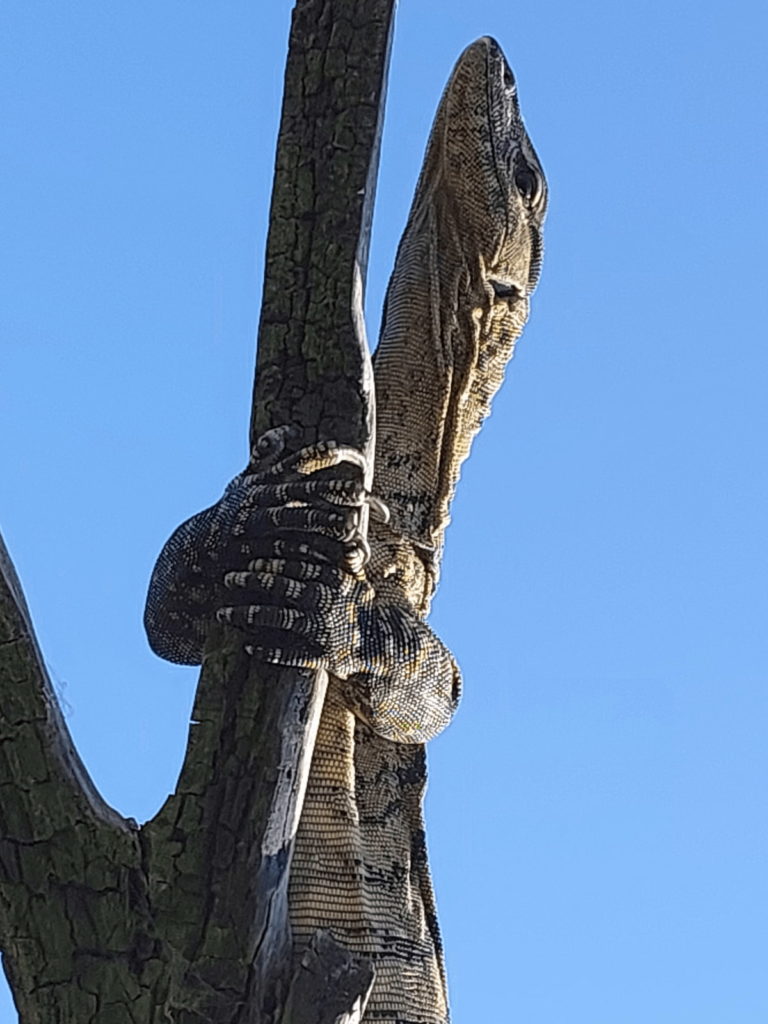
Living next to the Stirlings has given me the clarity of vision to see what this place could have been like. I’m keen to build some of that back over time – get some bush areas regrowing in patches where agriculture just doesn’t work.
Landcare is just something I’ve grown up with since Bruce Ivers – a family friend and landcare stalwart – used to come out, with his kids, and plant trees on the original Kojonup farm and then at Bruce Rock. These endeavours were driven by Dad and Mum – both have a strong interest in landcare. We’ve always done tree planting and other projects to help the more damaged parts of our farms. My landcare work has just grown from that seed. Then I went on to reading books. I’d sit in the header or seeder and listen to audio books on different regions’ landcare and agricultural practices and how to integrate them into the Australian environment. Many of them are based on using each part of our agricultural land to its best purpose. We set some areas apart as bush for little critters and birds to live so we don’t completely lose them from our ecosystems. But where the land is better suited to farming, we focus on building our soil’s agricultural capacity so it can keep producing for generations to come.
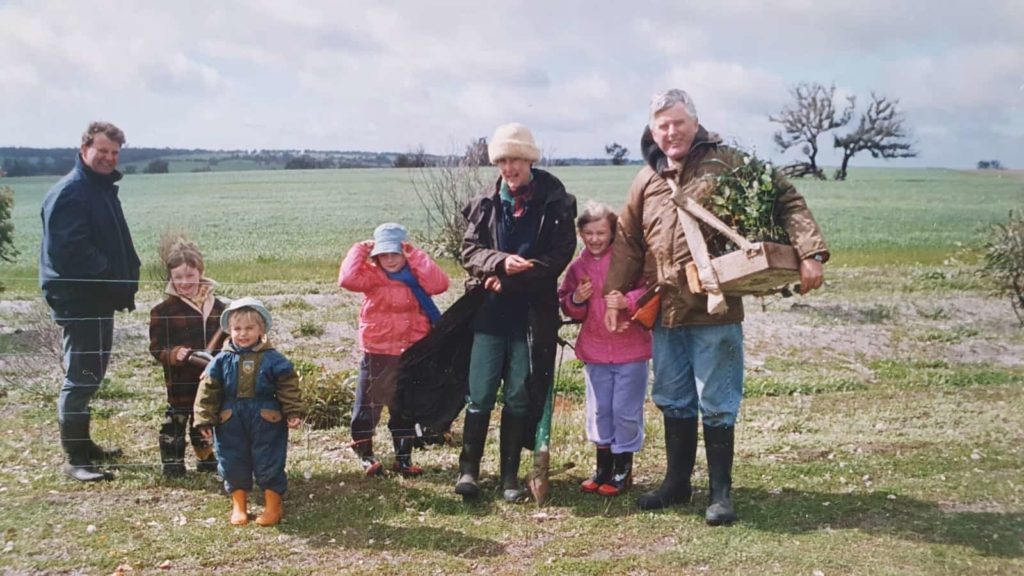
On our Tenterden farm we’ve done a black cockatoo project through South Coast NRM (natural resource management). We saw it as a fantastic opportunity to get help in transitioning selected areas of the farm to black-cockatoo-friendly habitat – not that it was the black cockatoos specifically that convinced us to take part. It was simply that having the grant available at the time helped us to achieve our goals of improved and protected bushland and, as a bonus, it helped a native species in trouble. We were lucky to direct-seed cockatoo food species – trees and shrubs – into two sites. Unfortunately, an unseasonably wet winter impacted the germination, but both sites have received in-fill plantings to help lift density. We also received funds for some fencing work, which has protected the revegetation sites and a very fine stand of white gums.
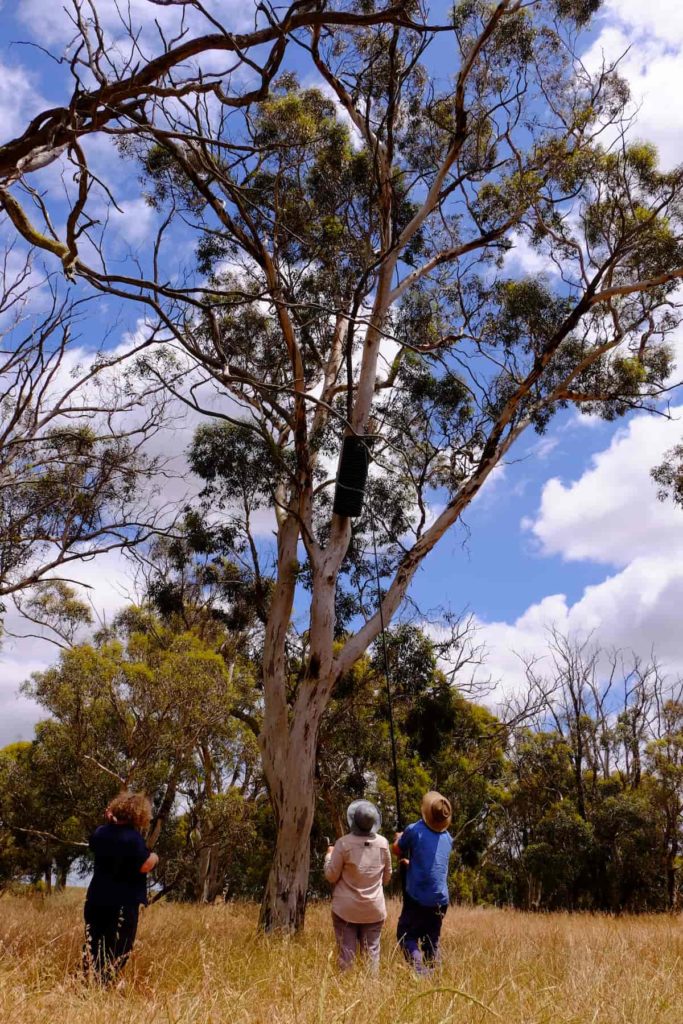
Our biggest landcare issue on the farm is soil health, so we’re tackling that. We have very compacted soils that create waterlogging and run-off issues in our paddocks, leading to erosion gullies. No doubt the run-off also picks up a stack of nitrogen and other minerals from the paddock and carts them down the creek. We’ve been tackling these compacted soils with inputs that promote more root growth. Getting roots breaking through our hard pans will help water move into the sub-soil.
The whole system is connected, and one indicator of the connection is salinity, with excess water causing salt problems. That’s another issue we’ve been working very hard to fix. It’s about trying to use that water before it raises the water table and brings salt stored in the soil to the surface, where it’s damaging. To help manage the water, we’re putting in saltbush plantings, with another 5000 stems coming this year. We will set them up as good sheep grazing areas, with some perennial pasture in there as well.
With cropping increasingly replacing sheep (not on our place but as a broader catchment-scale change), the salinity issue is being exacerbated. A crop uses less water than the pasture species grown for sheep grazing, so the water system gets further out of balance.
These are the sort of problems that I’m interested in, that I’d like to solve, and certainly I do spend an awful lot of time thinking about them. My time on the Gillamii Centre committee and going to a lot of Gillamii events, like farmer field days, opens me up to how other producers and industry figures are handling similar problems.
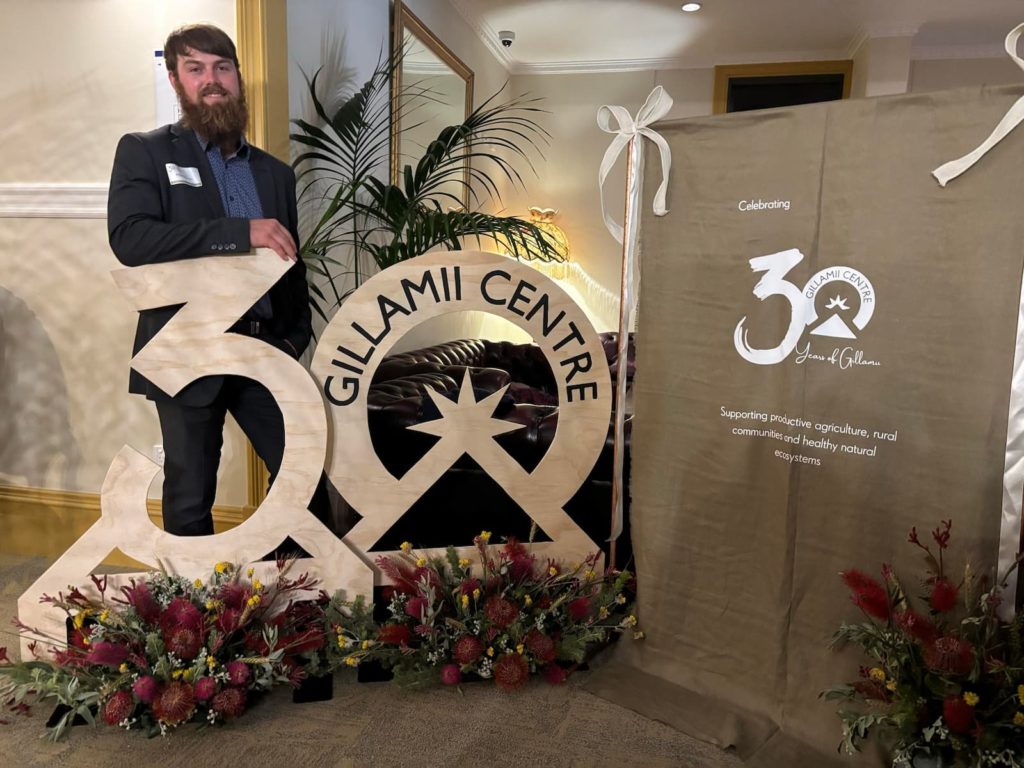
Thinking about whether there is a landcare ethic among farmers now, I’d say there are always going to be exceptions to the rule but, on the whole, farmers are very dedicated to their land and want it to be around for the next generation. I think they are sometimes misled in their practices by other interests, but I think the vast majority go out there trying to do the right thing for not only their production land, but other areas of the farm that aren’t production orientated.
I’d say they don’t think of it as landcare, they just think of it as farming. With saltbush plantings, for example, a lot of farmers have put them in and they just do it very quietly and you don’t know it’s happened. They’ve done it because they want summer grazing for their sheep, but I look at it and say “Well, far out, that’s very forward thinking and you’ve done some fantastic landcare work in halting salt there”.
That’s why I think the best way to encourage farmers to look after or plant wildlife habitat on their farm is by talking about salinity and waterlogging: focusing on issues that cost farmers money and then advising them on how they could solve it in an ecological manner. We need to look at it as a win-win scenario for famers and ecology. We can achieve this through offering solutions to production problems by showing farmers the benefits of strategic landcare work on areas that are the root cause of degradation.
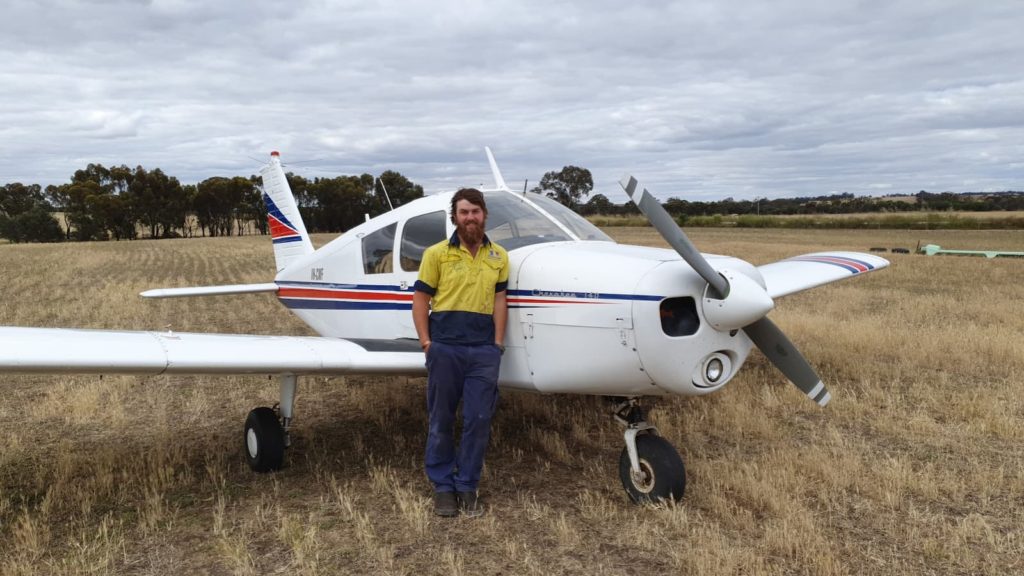
Here’s another landcare issue. Although I’ve packed up my flying for a bit, from the air I certainly had seen, and continue to see from the ground, what you’d probably call the death of the paddock tree. Every year there are farmers who keep knocking them out for cropping, which is a real shame because we’re losing some of our oldest trees in those areas. But the drive for production is trumping everything. Farmers need to stay in business and unfortunately it costs them money to go around trees. So they’re aiming to keep themselves in business and I think we need to respect that.
As much as I hate seeing paddock trees drop, I think it’s a lost battle. They’re going to drop, whether we like it or not, and there’s really not much we can do to stop it. I think we need to focus on encouraging producers to improve the areas of the farm that they are not using. Things like fencing projects for the remaining areas of bush, and planting projects. As a note of hope, I do see farmers, who have dropped many paddock trees, pick areas to replant and then plant many more trees than have been removed.
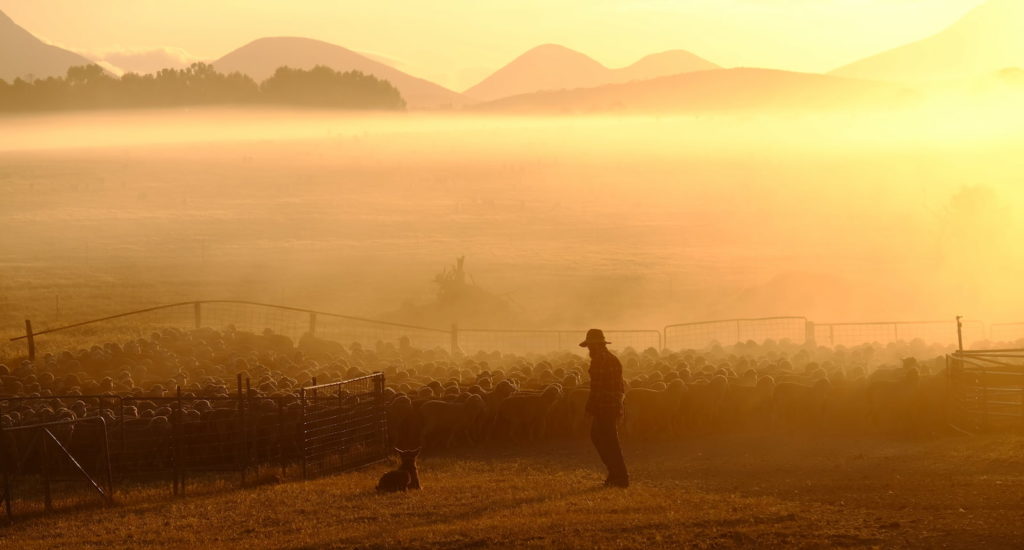
I find landcare comes down to mental capacity and time. It’s hard enough just trying to keep pushing on for another year, so those “It’d be nice to do one day” projects fall to the wayside. That’s why I think our landcare groups are so important. When you can have someone skilled and resourced who shows up and suddenly makes things happen, like fencing and planting, it works well. It’s a hard one though, because as sourcing funding becomes harder and we lose our landcare groups’ capacity, that support doesn’t happen as much. A lot of these groups are struggling, so we need to focus on building them up, building their capacity.
Another issue I see facing regional areas is the ever-increasing size of the average farm. As famers battle to stay profitable, they seek scale as a means of improving their bottom line. For instance, in Bruce Rock we ended up farming 5804 ha which historically had supported eight families. Whereas in our time it supported us, a full-time workman, his family and one casual worker at seeding and harvest. This is partly due to the cropping boom where large machines can help manage massive swathes of country with a minimum of human workforce. That leads to a further decline in rural populations. In comparison, a sheep flock still requires a much more human-based workforce, which adds to the fabric of our rural communities. The rise in larger corporate-style farms also affects landcare as the people making the big decisions are less directly in touch with the on-the-ground farmwork. They tend not to have the intimate connection with the land that enables them to see the changes in the land, for good or ill.
The other important social element is the push-back that’s happening, not so much against farmers directly but more against our agricultural practices as the broader public perceive them. I’ve seen that with the banning of the live sheep trade. I think we’re seeing this push-back because of the way agriculture is viewed by people who have become divorced from the realities of how their food is produced. To rebuild the trust between the consumer and the farmer, it’s essential we work on educating the populace about how agriculture works.
We also need to move with the times by responding to some of the degradation that’s happening on our land. As our markets become more environmentally conscious, we must adapt to those markets or be kicked out. So that is forcing a certain amount of change, but it’s pretty reluctant change – “just another thing to deal with”. We need to see the problem, such as soil carbon loss, and learn that there are options out there. It just requires a bit more lateral thinking.
I think carbon credits are really the next big thing. Whether you agree with carbon emissions being the cause of climate change or not, carbon is something that has a value and I think we need to make use of that. If we can change our agricultural practices to sequester carbon, we can utilise that as a diversified income stream. And maybe there will be an effective system of biodiversity credits too.
If we can change and deal with some of the degradation, I think farming has a very strong future. Farming has never been more important: we still have a growing population and we still need to feed everyone – we can’t forget about that. But we’ve also got to step back and take an honest look at our production systems and see the failings within those systems and the damage that is being done. I believe there has to be a lot of reflection before we can move forward into a more sustainable agricultural system.
THANKS to Monty House, Sheena and Marty House and the photographers. Editing by Gondwana Link’s Margaret Robertson and Keith Bradby, with Stephen Mattingley’s input.
FURTHER INFORMATION
Explore the landcare efforts of the Gillamii Centre, including its latest newsletters: Gillamii Centre – Cranbrook
Learn about the WA Landcare Network Inc, the peak state landcare body established to represent and support landcare groups across the state and at the national level: www.landcarewa.org.au
Here’s a 2018 Green Skills landcare video set in the Cranbrook Shire: Birds on the Edge: ‘WA’s Cranbrook Community Helping Threatened Shorebirds’.https://www.youtube.com/watch?v=DwO5s3XWM8c
Peruse the WA Auditor General’s Report (May 2018) on ‘Management of Salinity’.
Gondwana Link’s Heartland Journeys website contains many more landcare stories:
- A podcast of individual audio stories, including Sylvia Leighton, Heather Adams, Justin Jonson, Wendy Bradshaw, Ella Maesepp, Eddy and Donna Wajon, Alan Hordacre, and Noongar Elders Carol Pettersen, Eugene Eades, Ezzard Flowers and Lynette Knapp: podcast collection
- Written landcare stories include: Wilyun Pools Farm at Wellstead; Shaun Ossinger and the Wilson Inlet Catchment Committee; Balijup farm at Tenterden; Keith Bradby; Kingsley Vaux at Ongerup; the landcare reflections of Kojonup’s Kath Mathwin; and cultural burning stories from Elders, including ‘Giving fire back to Goreng Country’ and ‘Yarning about fire’.
Short, inspiring landcare videos on Gondwana Link’s YouTube channel include: Farming for the Future – Restoring Oyster Harbour Together; One Thousand Kilometres of Hope; and Ranges Link – Bringing Country Back to Life.
To support Gondwana Link’s work, please click here.
